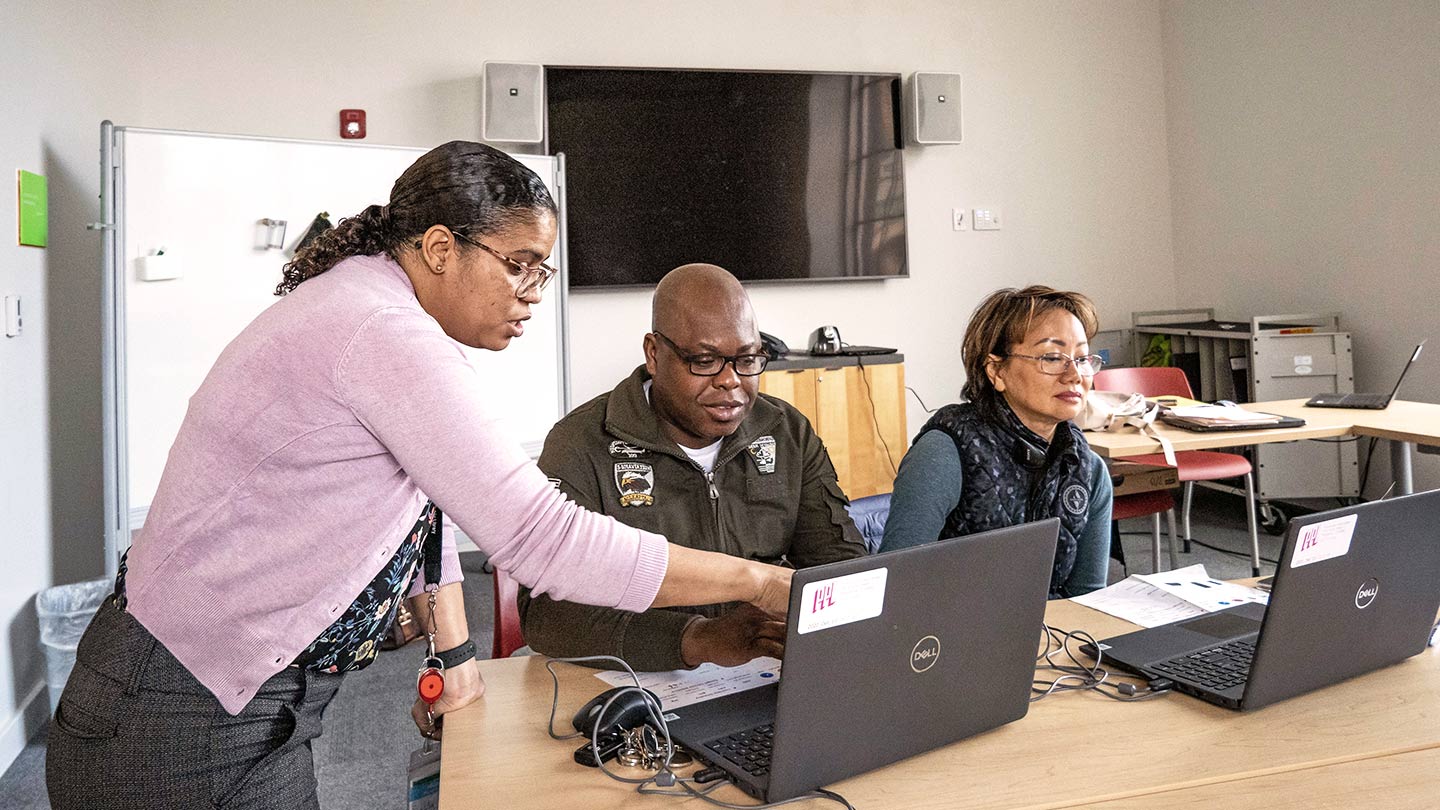
Communities across the country—even entire cities—lack access to the capital and resources needed to create economic growth and opportunity. Roughly 9% of Americans live in a persistent poverty census tract, where poverty rates have remained above 20% over the past 30 years, according to the U.S. Census Bureau.
Tackling the gap can seem daunting, but there are many high-impact ways you can contribute to community economic development.
“When you have an awareness of your community and the way money flows, you can be an advocate for benevolent change. Contributing to community economic development gives you equity in the solution, and everyone should feel like they have equity in their community,” said Chike Ohayia, Vice President of Intermediaries Lending at JPMorgan Chase.
We’ll explain four ways to get involved—drawing on JPMorgan Chase’s commitment to driving inclusive economic growth—and show how working with institutions investing in underserved communities can boost your impact.
1. Supporting economic development projects
Financing projects that create economic opportunity in underserved communities is often a team effort. It takes multiple parties and types of capital, including equity, debt and grants.
Connecting with a community development financial institution (CDFI) is a great way to identify promising projects in need of financing. CDFIs play a critical role in supporting underserved communities by providing capital, such as loans, to develop affordable housing, community facilities and small businesses.
Their mission-driven approach, deep local expertise and experience working with low-income communities means projects they support tend to have a high success rate, Ohayia said.
“When you’re investing in a project that’s also receiving financing from a CDFI, it typically means you’re getting that social impact and working with a solid team that is mission-aligned and has experience in development,” Ohayia said.
To get started, Ohayia suggests reaching out to local CDFIs and sharing information about the projects you’re interested in supporting and whether you’re looking to provide debt or equity. Opportunity Finance Network, a national network of more than 400 CDFIs, has a locator that can help you find CDFIs active in your community.
2. Investing in CDFIs
The CDFI industry has grown rapidly—both the number of certified CDFIs and their total assets, which tripled between 2018 and 2023, according to a New York Federal Reserve Bank report. Even so, most CDFIs say they saw increased demand in 2023, according to a separate Federal Reserve survey. Of those reporting steady or growing demand, only 40% could fully meet it.
Individuals can help CDFIs deploy more capital in communities by investing in loan funds at local CDFIs or CDFIs that operate on a national scale, such as LIIF and Enterprise Community Loan Fund. Another option: supporting a diverse portfolio of organizations by investing through institutions such as Opportunity Finance Network and Calvert Impact. Each organization may offer different terms, including minimum investment amount, interest rates and maturities.
“Loan fund capital is very catalytic for CDFIs,” Ohayia said. “The goal is for these CDFIs to have as flush a liquidity base as possible so they can provide support—either financial or technical—to projects and initiatives as consistently as possible.”
Investing in CDFIs, rather than specific projects, can make sense for people who want to help finance community development but prefer a more hands-off role or more diversification.
3. Giving through community grants
Grants give organizations active in community economic development much-needed capital that allows them to be more flexible in the projects they support. For instance, a CDFI might use a community economic development grant as a backstop for an affordable housing development that needs additional collateral, in case costs run over.
“It can help a CDFI say yes to projects that have strong potential but would otherwise be challenging to support,” Ohayia said.
There are two main types of grants:
- Unrestricted grants give the organization flexibility to choose how to best use the funds.
- Restricted grants let the donor earmark funds for a specific project or type of project aligned with their philanthropic goals. A donor can also choose to give funds with temporary restrictions that later convert to unrestricted funds.
J.P. Morgan Private Bank offers services for people interested in giving back through community philanthropy, including assisting charitable foundations with grantmaking.
4. Capacity building
Financial contributions aren’t the only way to support your community’s economic development. Experts can offer education and technical assistance. Depending on your background and skillset, that could include speaking at a seminar on financial wellness or holding a workshop for small-business owners. You could also consider one-on-one business mentorship, similar to the small business consulting JPMorgan Chase’s Consumer & Community Banking team offers through the Coaching for Impact program.
“Having people who are credible and relatable and willing to share their experience and perspective can have a big impact,” Ohayia said.
How do you find these opportunities?
“CDFIs are a great place to start because they often offer borrowers technical assistance along with capital,” Ohayia said.
Even if there isn’t an opportunity to work directly with the CDFI, they may have connections to other local organizations that may be a good fit.
Getting started
When getting involved in your community’s economic development, a little preparation can help you develop a strategy that aligns with your goals and ensures results:
- Know your market: The better you understand your community’s economy and commercial real estate market, the better you can identify the type of development that would be beneficial.
- Consider outcome priorities: Do you envision creating affordable housing? Helping redevelop neighborhoods? Supporting small businesses? Defining your desired impact can help you identify projects or CDFIs that are a good match.
- Assess financing options: Your best approach to supporting community economic development may depend on how much capital you’re able to contribute and whether you expect a financial return. Working with a wealth advisor can help you understand your options.
“If you come to the CDFI with a perspective on how your local market works and what you’re trying to accomplish, it can make for a better relationship,” Ohayia said. “They may be able to direct you to opportunities that fit your goals and risk criteria.”
JPMorgan Chase Bank, N.A. Member FDIC. Visit jpmorgan.com/cb-disclaimer for disclosures and disclaimers related to this content.







